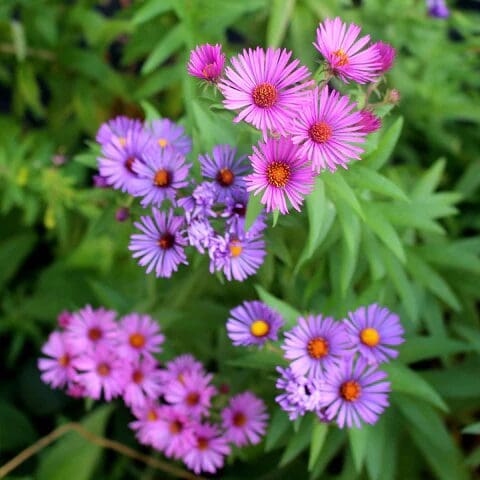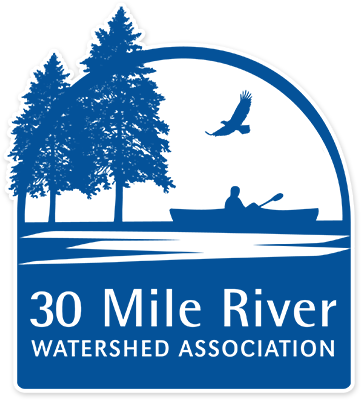- Native plants are suitable for the regional climate, have adapted to this area over time, and therefore require much less maintenance and watering.
- Native plants have significant wildlife value, as they are used by insects, birds, moths, butterflies, and other animals as both a food source, living, and breeding habitat.
- Roughly one-third of New England’s native species are endangered due to invasive exotic species that displace natives.
- Using native species on your property celebrates the uniqueness and beauty of Maine!
Luckily, many local nurseries now have a good supply of native plants available for purchase. Here are some resources to help you select the native species right for your landscape:
Maine Lakes’ Protect Your Pond brochure – click here to download the PDF and more!
Maine Audubon’s Native Plant Finder – www.mainenativeplants.org
Wild Seed Project – www.wildseedproject.net
More about invasives and plants to avoid
Invasive plants outcompete our native trees, shrubs, and wildflowers in their natural habitats. When an infestation occurs, a monoculture stand of a single invasive species results in a landscape devoid of any biodiversity. Invasive plants can easily overtake our natural landscapes, parks, farmland, and yards – not only displacing other native plant species, but reducing the habitat critical for native wildlife. Invasive plants are experts at outcompeting native species because, here in Maine, they lack their natural predators, diseases, and pathogens. This means they can quickly take advantage in a wide variety of soil conditions.
Approximately one third of Maine’s 2,100 plant species are not native. Only a small fraction of these non-native species are considered invasive, but these have the potential to cause great harm to our landscape.The following is a list of the most common terrestrial invasive plant species in Maine, including plant species currently on Maine’s DO NOT SELL list:

Photo source: www.wildseedproject.net
- Acer ginnala (Amur Maple)
- Acer platanoides (Norway Maple)
- Aegopodium podagraria (Bishop’s Weed)
- Ailanthus altissima (Tree of Heaven)
- Alliaria petiolata (Garlic Mustard)
- Amorpha fruticosa (False Indigo Bush)
- Ampelopsis glandulosa (Porcelain Berry)
- Artemisia vulgaris (Common Mugwort)
- Berberis thunbergii (Japanese Barberry)
- Berberis vulgaris (Common Barberry)
- Celastrus orbiculatus (Asiatic Bittersweet)
- Cynanchum louiseae (Black Swallowwort)
- Elaeagnus umbellata (Autumn Olive)
- Euonymous alatus (Winged Euonymous aka Burning Bush)
- Euphoria cyparissas (Cypress Spruge)
- Fallopia baldschuanica (Chinese Bindweed)
- Fallopia japonica (Japanese Knotweed)
- Frangula alnus (Glossy Buckthorn)
- Impatiens glandulifera (Ornamental Jewelweed)
- Iris pseudacorus (Yellow Iris)
- Ligustrum vulgare (Common Privet)
- Lonicera japonica (Japanese Honeysuckle)
- Lonicera maackii (Bush Honeysuckle)
- Lonicera morrowii (Morrow’s Honeysuckle)
- Lonicera tatarica (Tartarian Honeysuckle)
- Lythrum salicaria (Purple Loosestrife)
- Microstegium vimineum (Japanese Stilt Grass)
- Paulownia tomentosa (Princess Tree)
- Persicaria perfoliata (Mile-a-Minute)
- Phellodendron amurense (Amur Cork Tree)
- Phragmites australis (Common Reed)
- Populus alba (White Cottonwood)
- Rhamnus cathartica (Common Buckthorn)
- Robinia pseudoacacia (Black Locust)
- Rosa multiflora (Multiflora Rose)
- Rosa rugosa (Rugosa Rose)
